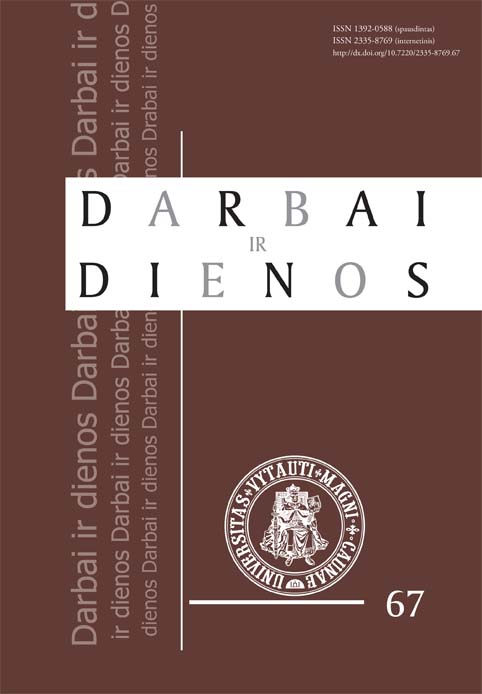Refugees Between Myth and Reality
Refugees Between Myth and Reality
Author(s): Simonas StrelcovasSubject(s): Politics / Political Sciences, History, Diplomatic history, WW II and following years (1940 - 1949), Migration Studies
Published by: Vytauto Didžiojo Universitetas
Keywords: Sugihara; Lithuania; Refugees; World War II; Memory;
Summary/Abstract: The number of memorial sites dedicated to Ch. Sugihara in Lithuania is growing every year. This figure is particularly well known in Kaunas and Vilnius (the main cities of Lithuania). The memorialization process of Ch. Sugihara takes place in Japan as well. Does this enhanced attention to Sugihara in both countries allow us to speak about memorialization links between Japan and Lithuania? Is there any opportunity to carry out studies in order to investigate activities dedicated to his remembrance? To this end, we have to research the actions taken in order to create Ch. Sugihara's image in the sources of historical, cultural and communicating memory. But first, we have to find out what was going on in 1940 and try to answer very important questions. During the first weeks of World War II, while the German-Polish front line was proceeding east, thousands of people were moving towards unoccupied regions. The refugees might be described as a large mixed mass, in which Polish and Jewish refugees represented the absolute majority. The civil refugees and internees came to Lithuania escaping from the war, and this decision was not based on free will, but on a natural survival instinct. The archival sources provide information that some of the Polish underground organizations had very closely connected with foreign embassies and consulates. The network of underground covered Warsaw, Berlin, Stockholm, Paris, London and Tokyo. However, after June 15, 1940, the situation changed drastically. When the Jewish refugees fell under the Soviet influence for the second time, they had an intention to leave Lithuania which was being annexed. The Jewish refugees began to seek for alternative ways of leaving Lithuania which was losing its independence. The Japanese diplomat, who served as Vice-Consul for the Empire of Japan in Lithuania, Ch. Sugihara was the rescuer who helped refugees leave Lithuania. Despite the fact that many years had passed since summer 1940, there are still too many unanswered questions. The circumstances of the connection between Polish underground and Japanese consulate are still unknown, as well as the role of links between the foreign embassies in Kaunas (Lithuania), the countries they were representing and the refugees who tried to escape in the summer 1940. The answers would be like material to produce bricks in order to create a palace of memory and enable us to speak about the memorialization links between Japan and Lithuania.
Journal: Darbai ir dienos
- Issue Year: 2017
- Issue No: 67
- Page Range: 139-150
- Page Count: 12
- Language: English

